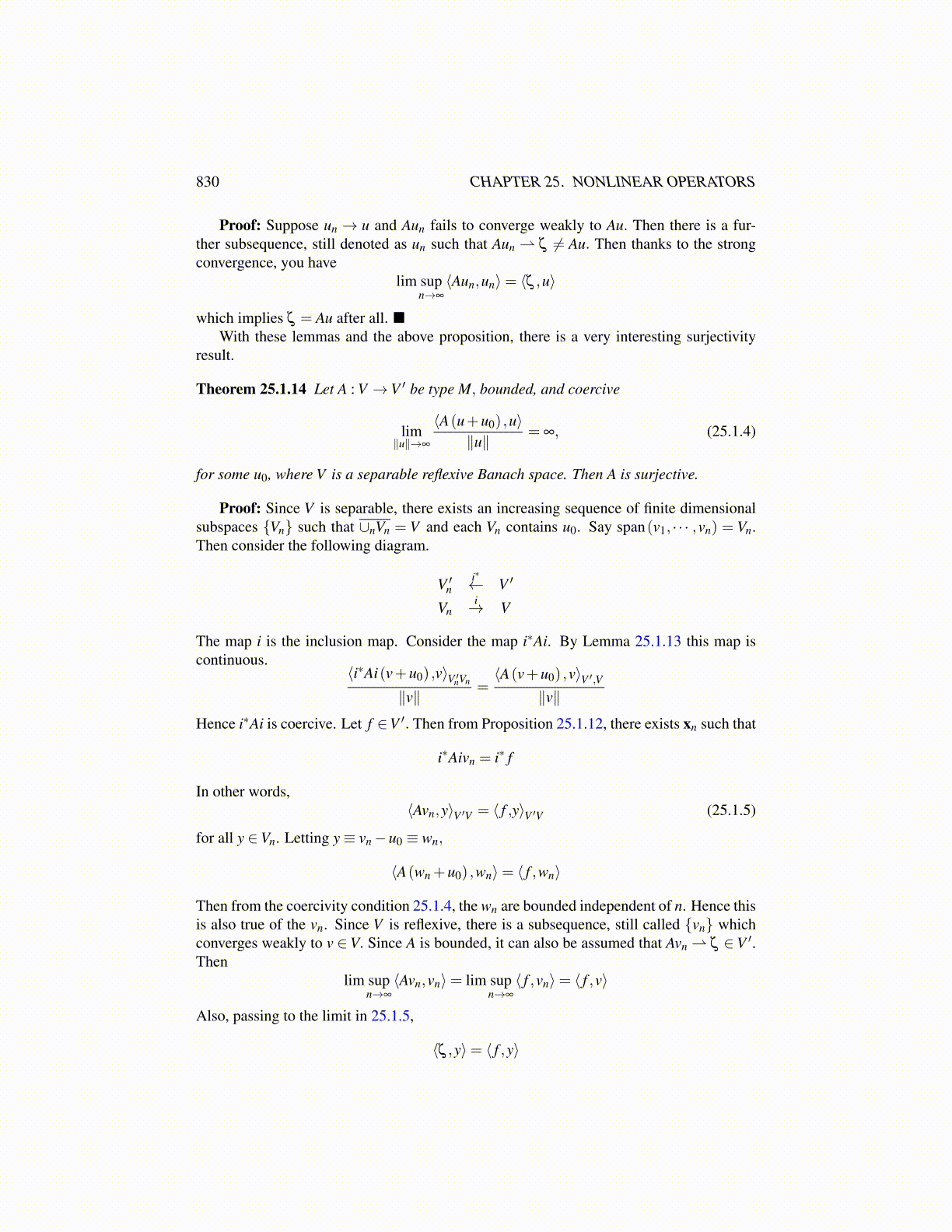
830 CHAPTER 25. NONLINEAR OPERATORS
Proof: Suppose un → u and Aun fails to converge weakly to Au. Then there is a fur-ther subsequence, still denoted as un such that Aun ⇀ ζ ̸= Au. Then thanks to the strongconvergence, you have
lim supn→∞
⟨Aun,un⟩= ⟨ζ ,u⟩
which implies ζ = Au after all.With these lemmas and the above proposition, there is a very interesting surjectivity
result.
Theorem 25.1.14 Let A : V →V ′ be type M, bounded, and coercive
lim∥u∥→∞
⟨A(u+u0) ,u⟩∥u∥
= ∞, (25.1.4)
for some u0, where V is a separable reflexive Banach space. Then A is surjective.
Proof: Since V is separable, there exists an increasing sequence of finite dimensionalsubspaces {Vn} such that ∪nVn = V and each Vn contains u0. Say span(v1, · · · ,vn) = Vn.Then consider the following diagram.
V ′ni∗← V ′
Vni→ V
The map i is the inclusion map. Consider the map i∗Ai. By Lemma 25.1.13 this map iscontinuous.
⟨i∗Ai(v+u0) ,v⟩V ′nVn
∥v∥=⟨A(v+u0) ,v⟩V ′,V
∥v∥
Hence i∗Ai is coercive. Let f ∈V ′. Then from Proposition 25.1.12, there exists xn such that
i∗Aivn = i∗ f
In other words,⟨Avn,y⟩V ′V = ⟨ f ,y⟩V ′V (25.1.5)
for all y ∈Vn. Letting y≡ vn−u0 ≡ wn,
⟨A(wn +u0) ,wn⟩= ⟨ f ,wn⟩
Then from the coercivity condition 25.1.4, the wn are bounded independent of n. Hence thisis also true of the vn. Since V is reflexive, there is a subsequence, still called {vn} whichconverges weakly to v ∈V. Since A is bounded, it can also be assumed that Avn ⇀ ζ ∈V ′.Then
lim supn→∞
⟨Avn,vn⟩= lim supn→∞
⟨ f ,vn⟩= ⟨ f ,v⟩
Also, passing to the limit in 25.1.5,
⟨ζ ,y⟩= ⟨ f ,y⟩